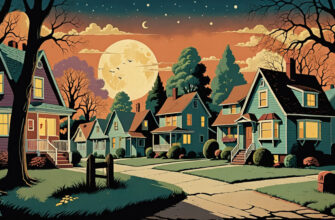Dreams featuring a dead woman often stir up a mix of intense feelings that can leave you wondering what they mean. Are these dreams about actual loss, or do they tap into something deeper—parts of yourself that feel like they’ve been left behind or quietly dying? Many find these nighttime visions are less about literal death and more about emotional shifts, the closing of chapters, or hidden grief that hasn’t yet found a voice. Whether the woman is someone familiar or a stranger, her presence can hold clues to your inner world—offering a chance to witness transformation, reckon with old wounds, and maybe even reclaim something vital that’s slipping away.
- Understanding Dreams of a Dead Woman
- What These Dreams Represent Emotionally and Spiritually
- Known vs. Unknown Dead Woman in Dreams
- Emotional Crossroads: Grief, Femininity, and Healing
- The Feminist and Trauma-Informed Lens on Dream Interpretation
- Challenging Fear and Superstition in Dreams of Death
- Feminism’s Role in Reclaiming Stories from These Dreams
- Trauma-Informed Approach: Safety, Validation, and Growth
- What Are You Mourning? Exploring the Buried Self
- Identifying the Quiet Losses Beyond Physical Death
- The Invitation to Healing and Inner Rebirth
- Astrology as a Mirror to Emotional Tides in These Dreams
- The Lunar Cycle and Its Influence on Nighttime Emotions
- Karmic Cycles Reflected in Patterns of Loss and Transformation
- Astrology’s Tools for Reflection and Self-Knowledge
- Healing Through Dreams: Reclaiming Feminine Power
- From Mourning to Rebirth: Embracing the Cycle of Endings
- How Dreams of Dead Women Illuminate Feminine Wisdom
Understanding Dreams of a Dead Woman
What These Dreams Represent Emotionally and Spiritually
Straight up, dreaming of a dead woman often mirrors the hidden grief we carry—those parts of ourselves that we’ve neglected or tried to ignore. Maybe it’s unresolved pain from past relationships, lost parts of your identity, or feelings you locked away to just keep moving forward. The image of death here isn’t an end in a dark sense but more like an invitation to acknowledge what’s been buried, unattended, or folded into shadows.
These dreams can also serve as a signpost for personal metamorphosis. When you’re witnessing a “death” in a dream, it could be pointing out inner endings: old belief systems, outdated roles, or emotional patterns you’re outgrowing. It’s less about the physical and more about a kind of dying and rebirth within your spirit.
What often gets overlooked is how these dreams guide you through losses that aren’t tied to actual death. You might be grieving the way things used to be, mourning a shift in connection to your feelings, or feeling the ache of separation from a once-familiar version of your feminine self. The dream pushes you to sit with those emotions, to face the change honestly instead of running from it.
Known vs. Unknown Dead Woman in Dreams
If the dead woman in your dream feels familiar—maybe a mother, grandmother, or friend—you could be meeting echoes of ancestral pain or unresolved family stories. These figures embody layers of grief passed down, sometimes tangled with collective female experience, calling attention to emotional heritage you’re carrying.
On the flip side, an unknown dead woman often acts like a shadow figure, a symbol of the parts of yourself that are hidden, rejected, or unexplored. She may represent instincts, desires, or wounds you’ve yet to fully confront. This shadow work invites you to discover what’s been buried and how those unseen pieces impact your sense of wholeness—especially your feminine identity.
Emotional Crossroads: Grief, Femininity, and Healing
Dreams of dead women often turn up right when the energy around your feminine identity is shifting—when the way you understand your power, vulnerability, or emotional expression is in flux. Mourning in these dreams isn’t just sorrow—it can be a crucial threshold for reclaiming feminine energy lost to silence or suppression.
Consider grief here as a portal rather than a pitfall. Through this mourning, new layers of self-awareness and feminine strength are waiting to emerge. The dream is a quiet nudge toward healing that feels both raw and necessary, offering a chance to step into a more authentic version of who you are.
The Feminist and Trauma-Informed Lens on Dream Interpretation
Challenging Fear and Superstition in Dreams of Death
Death dreams, especially those featuring a dead woman, often come wrapped in cultural fear and superstition. But these nocturnal stories aren’t sinister fate-tellers; instead, they are invitations to sit with discomfort and vulnerability. Embracing the messy emotional mix without judgment helps to see these dreams as part of an emotional process rather than ominous warnings.
What’s happening in the dream space can be complex and unpredictable—sometimes sorrow, sometimes release, sometimes unexpected insight. Allowing room for all these responses underlines the importance of acknowledging emotional complexity instead of shoving feelings aside to avoid “bad” dreams.
Feminism’s Role in Reclaiming Stories from These Dreams
Viewing these dreams through a feminist lens surfaces how gender, grief, and autonomy intersect. The dead woman isn’t just a figure of loss but part of a collective female history—an archive of pain, resilience, and survival passed down through generations.
Honoring this history means recognizing ancestral grief as part of your own story, but also reclaiming power in how you hold and tell that story. Dreams become spaces to rewrite narratives that might have silenced feminine voices or erased their autonomy. There’s freedom in dreaming yourself as the author, not just a passenger in inherited sorrow.
Trauma-Informed Approach: Safety, Validation, and Growth
This kind of dream can unravel raw material from trauma that isn’t neat or sequential. A trauma-informed approach recognizes dreams as a sometimes nonlinear path toward healing. It emphasizes safety—both emotionally and spiritually—allowing you to hold your experience without pressure to fix or explain it immediately.
Self-compassion and clear boundaries are crucial here. Ground your dreamwork in kindness toward yourself, creating a container where feelings can come and go with less fear. This approach supports growth that honors your pace and preserves your well-being.
What Are You Mourning? Exploring the Buried Self
Identifying the Quiet Losses Beyond Physical Death
There’s more going on in these dreams than a straightforward farewell to a person. Often, the death symbolizes fading aspects of yourself—maybe old roles you once leaned into, parts of your emotional landscape, or relationships quietly dissolving over time. These aren’t clattering exits; they’re subtle erosions that call for recognition.
Family and cultural wounds can also echo in these images. What collective struggles or inherited gaps are weaving through your dreaming? Sometimes the dream reveals that silent grief stirred by societal expectations or familial history that you’ve been too tired or wary to face openly.
| Type of Loss | Dream Symbol | Emotional Theme |
|---|---|---|
| Untended wounds from past relationships | Familiar dead woman | Unresolved grief, longing |
| Parts of self fading away | Unknown dead woman | Disowned emotions or desires |
| Cultural or ancestral pain | Symbolic female figure | Collective mourning, healing |
The Invitation to Healing and Inner Rebirth
Accepting what’s ending feels like stepping into a strange new space—empty but fertile. This is where real healing begins. Instead of holding onto what’s lost, the dream asks what fresh form of feminine energy wants to take root in that space.
Healing isn’t magic overnight. It’s a process of tender curiosity about what’s dying so something else can bloom. What traits or parts of yourself want to be nurtured and set free now?
- What closed chapters in your life are these dreams reflecting?
- In what ways might your feminine power be transforming quietly?
- Which forgotten feelings or hopes need to be honored to move forward?
Remember, you were born for this transformation—not as a burden, but as a guiding flame for your next phase of becoming.
Astrology as a Mirror to Emotional Tides in These Dreams
Ever woken up from a dream about a dead woman, feeling a swirl of emotions you can’t quite place? These dreams aren’t just random images—they’re deeply connected to the cycles and energies that move through us and the cosmos. Astrology offers a way to read this emotional weather, showing how the moon’s phases and planetary shifts echo inner waves of grief, healing, and transformation.
The Lunar Cycle and Its Influence on Nighttime Emotions
The moon holds an intimate sway over emotional tides, especially in dreams. New moons are all about planting seeds—when dreams of loss or shadowy figures appear here, it’s often a call to acknowledge hidden feelings and start fresh with emotional clarity. Full moons light up what’s been buried. Dream intensity spikes as emotions flood the surface, sometimes making the appearance of dead women symbolic of deep, raw grief or endings.
The rhythm of feminine energy flows with these lunar phases. Emotions rise and fall like tidewaters, matching the moon’s pull. The waxing moon stirs hope and growth, while the waning moon invites release and letting go. When a dead woman shows up in dreams amid these cycles, she might be speaking through the moon’s language—telling a story of endings that birth new beginnings.
Karmic Cycles Reflected in Patterns of Loss and Transformation
Planets moving backward, or retrogrades, often feel like a cosmic rewind—offering a chance to revisit unresolved feelings. Dreaming of dead women during Mercury or Venus retrograde, for example, can bring up memories of loss or relationships dangling in the ether, unfinished and aching.
Outer planets like Saturn, Pluto, and Neptune visit our charts with heavy lessons about death and rebirth. When their transits trigger personal or collective endings, dreams can sift through layered emotions tied to deep transformation. Sometimes, these aren’t just personal stories—they hold ancestral echoes, karmic patterns passed down generations.
Dreams of dead women can carry the weight of ancestral karma—pain and power encoded in family lines, especially feminine lineages. A grandmother, aunt, or unknown female ancestor might appear as a messenger, asking to witness past wounds and honor those losses so healing can move forward. These dreams speak to a thread connecting time, inviting embodied remembrance and release.
Astrology’s Tools for Reflection and Self-Knowledge
Natal charts aren’t just star maps—they’re mirrors reflecting emotional landscapes. When grief surfaces in dreams, looking to your moon, Pluto, and 12th house placements can reveal which shadow parts are activated. These insights help make sense of what the dream is stirring beneath consciousness, framing self-understanding as a form of liberation.
Following transits and lunar cycles creates a personal cosmic weather report that keeps emotional waves visible and manageable. This chart-based awareness allows for empowered navigation through confusing feelings, turning dreams into guides—not omens. Astrology becomes a tool for healing, showing that grief and transformation are part of the same ongoing dance.
Healing Through Dreams: Reclaiming Feminine Power
From Mourning to Rebirth: Embracing the Cycle of Endings
Dreams of dead women often arrive at crossroads, nudging recognition of endings that demand mourning—but also promising transformation. These moments carry tension: a mix of sadness, hesitation, and the itching urge to move forward into something new.
Let these dreams be guides through the shifting phases of your inner life:
- Honor what feels lost: Sit with the sorrow that blooms in the dream’s wake. Let it be real, valid, and witnessed.
- Create rituals to mark transition: Lighting a candle for what’s ended or writing a letter to the dream figure can help close cycles.
- Journal prompts for transformation: What parts of your femininity are “dying” or shifting? How might you hold space for the new to emerge?
These practices tether you to embodied change, honoring the dark before the dawn.
How Dreams of Dead Women Illuminate Feminine Wisdom
These dreams often carry coded messages from feminine wisdom long buried or denied. By engaging with them openly, it becomes possible to reclaim ancestral strength and unlock hidden resilience.
Women who appear dead in dreams might be ancestors offering protection, lessons, or truth, surfacing to illuminate the path forward. Their presence invites reconnecting with a lineage of powerful female spirits who have endured and transformed through struggle.
Seen through a queer and feminist astrological lens, these dreams challenge the usual narratives around death, grief, and power. They push against silence—reclaiming death as part of life’s sacred cycle, where vulnerability and strength coexist. The feminine power awakened in this process isn’t fragile; it’s fierce, ancient, and ready for rebirth.
In embracing these dream figures, grief and loss transform into wells of wisdom and creative force. This is dreaming as healing—a spiritual practice inviting you to own your full story, including the shadows, and rise anew.








